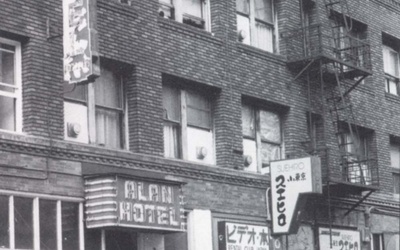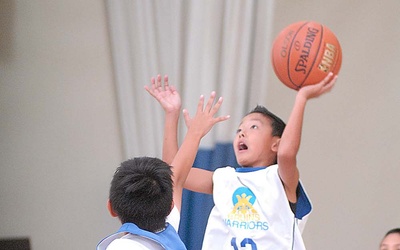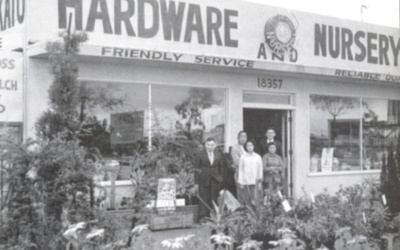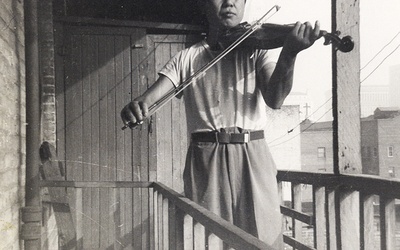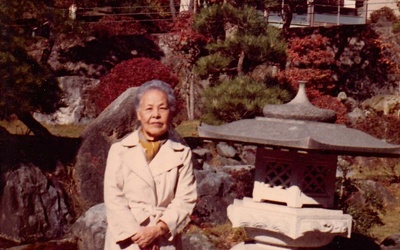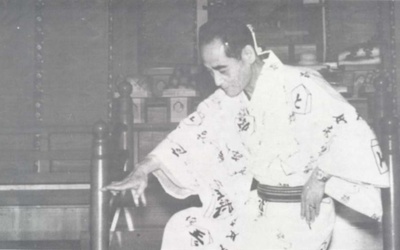Vozes Nanka Nikkei
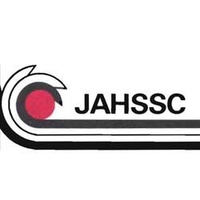
Nanka Nikkei Voices (NNV) é uma publicação da Sociedade Histórica Nipo-Americana do Sul da Califórnia. Nanka significa “Sul da Califórnia”. Nikkei significa nipo-americano(s). O foco da NNV é registrar as histórias da comunidade nipo-americana no sul da Califórnia por meio das “vozes” dos nipo-americanos comuns e de outras pessoas que têm uma forte conexão com nossa história e herança cultural.
Esta série apresenta várias histórias das últimas 4 edições do Nanka Nikkei Voices.
Stories from this series
O Alan Hotel
15 de Março de 2016 • Naomi Hirahara
Para os jornalistas, há histórias, talvez apenas algumas, que nunca nos abandonam. É assim que me sinto em relação ao Alan Hotel em Little Tokyo. Faltava quase uma vida inteira, em 1986, quando eu era soldado de infantaria, ou mais oficialmente, repórter do jornal diário nipo-americano The Rafu Shimpo . Eu usava meu cabelo comprido solto em permanente, com a franja cortada curta para que eu pudesse ver. Ver era importante para um repórter — e não conseguia acreditar no …
O Encontro do Elevador
8 de Outubro de 2015 • Ellen Endo
Há cerca de um ano, um amigo e eu estávamos entrando no elevador de um arranha-céu no centro da cidade. Apertei o botão do quinto andar. Meu amigo queria saber como o Rafu Shimpo consegue reunir os nomes dos alunos para sua edição de formatura todos os anos. “Está ficando cada vez mais difícil a cada ano”, admiti. “Os funcionários da escola nem sempre querem nos dar os nomes dos alunos de ascendência japonesa.” Um homem, que já estava no …
Legados
19 de Junho de 2015 • Iku Kiriyama
Para os nipo-americanos da minha geração (segunda geração nissei com mais de 60 anos), a fonte dos nossos valores morais e culturais é clara e facilmente definida. Nossos valores morais e culturais brotam da herança cultural japonesa de nossos pais e avós. Se um grupo de nisseis, não familiarizados entre si, se reunisse em uma sala e surgisse uma discussão sobre nossos dias de infância, você encontraria um vínculo instantâneo, pois o compartilhamento de histórias mostrava histórias comuns de valores …
Reassentamento
10 de Junho de 2015 • Martha Nakagawa
Akio “Lawrence” Nakagawa, um Kibei da região do Delta de Sacramento, foi internado no campo de Topaz, Utah. Respondendo à pergunta de lealdade “Não-Não”, ele foi transferido para Tule Lake, Califórnia, onde permaneceu até o fim da guerra, partindo em setembro de 1945. Quando foi libertado de Tule Lake, ele decidiu seguir em direção ao meio-oeste para Minneapolis, Minnesota. Lá, ele se matriculou na Escola Bíblica Central Norte, uma escola da qual ele ouviu falar através de um ministro caucasiano …
Gerações anteriores
6 de Maio de 2015 • Brian Niiya
Uma das coisas que finalmente aprendi é que existem pessoas tardias e pessoas primitivas. Existem famílias tardias e famílias precoces. E há gerações tardias e gerações iniciais. Venho de uma família antiga. Meus pais costumavam aparecer em todos os lugares meia hora mais cedo. Aprendi desde cedo que se fôssemos buscar alguém no aeroporto, por exemplo, haveria uma espera de pelo menos 30 minutos se o avião chegasse na hora certa. Ir a um jogo de beisebol significava chegar lá …
O reassentamento Okazaki-Kuida
20 de Abril de 2015 • Jenni “Emiko” Kuida
Meus pais eram crianças pequenas quando a EO 9066 foi assinada. Minha mãe, Machiko Okazaki, morou em quatro lugares dos quatro aos sete anos de idade. Autódromo de Santa Anita. Montanha do Coração, Wyoming. Cidade de Cristal, Texas. Fazendas Seabrook, Nova Jersey. O meu avô, Masashi Bancho Okazaki, ministro de Tenrikyo, foi separado da família devido à sua ocupação como ministro. Ele se reuniu com minha avó e seus cinco filhos em Crystal City em 1944. Sua filha Sumi, de …

